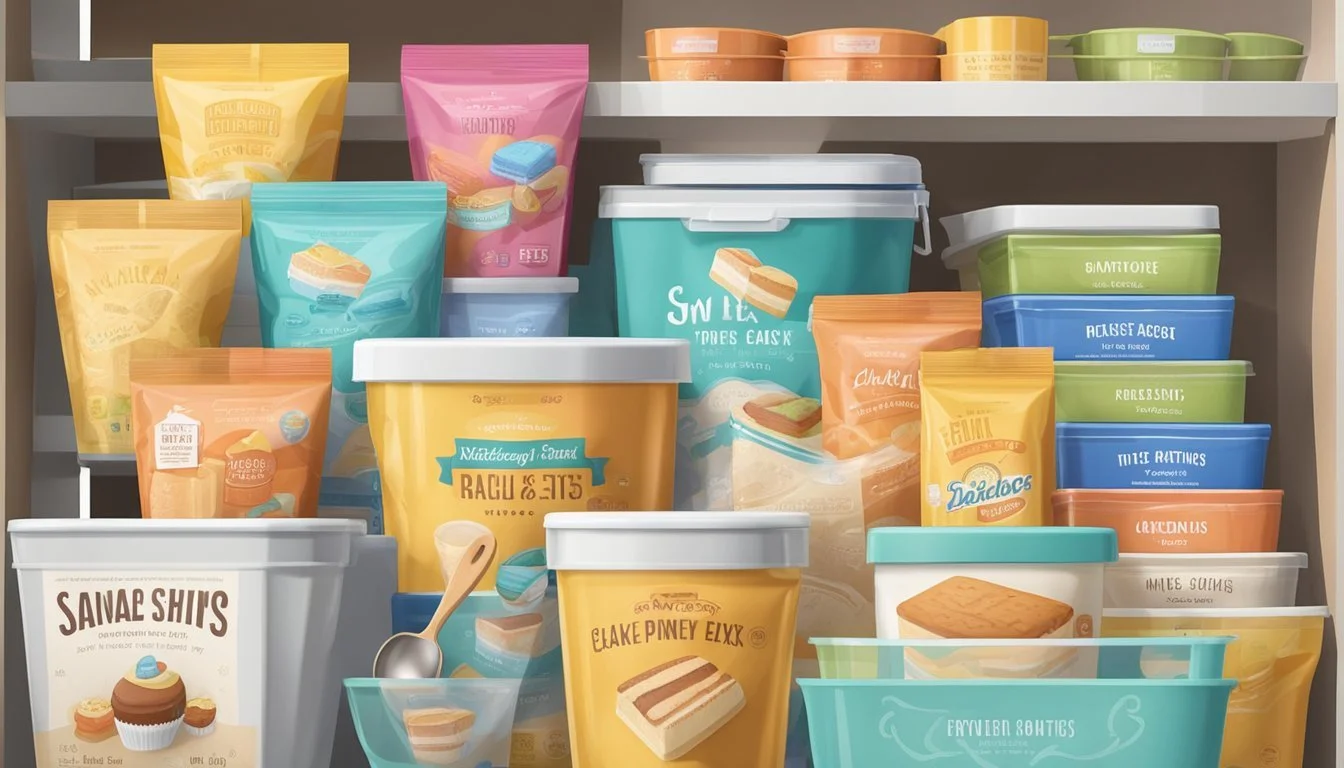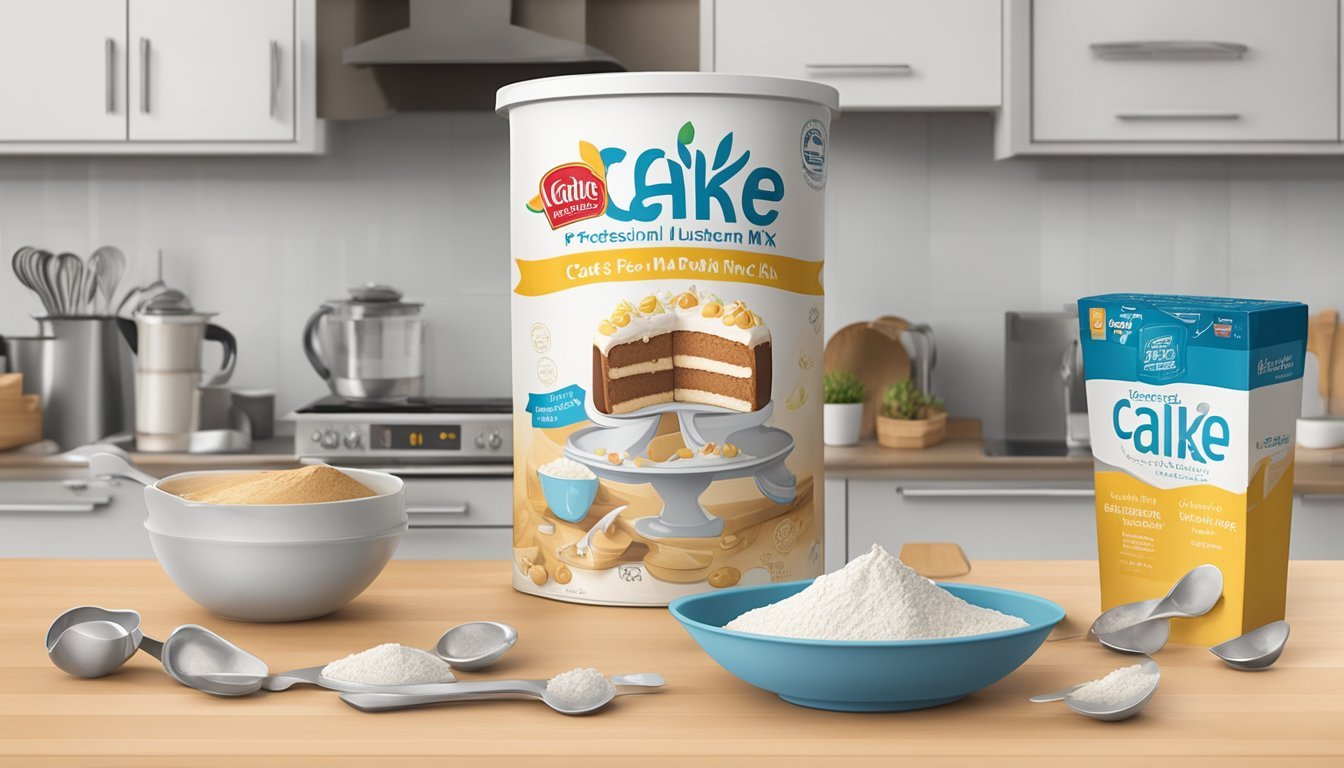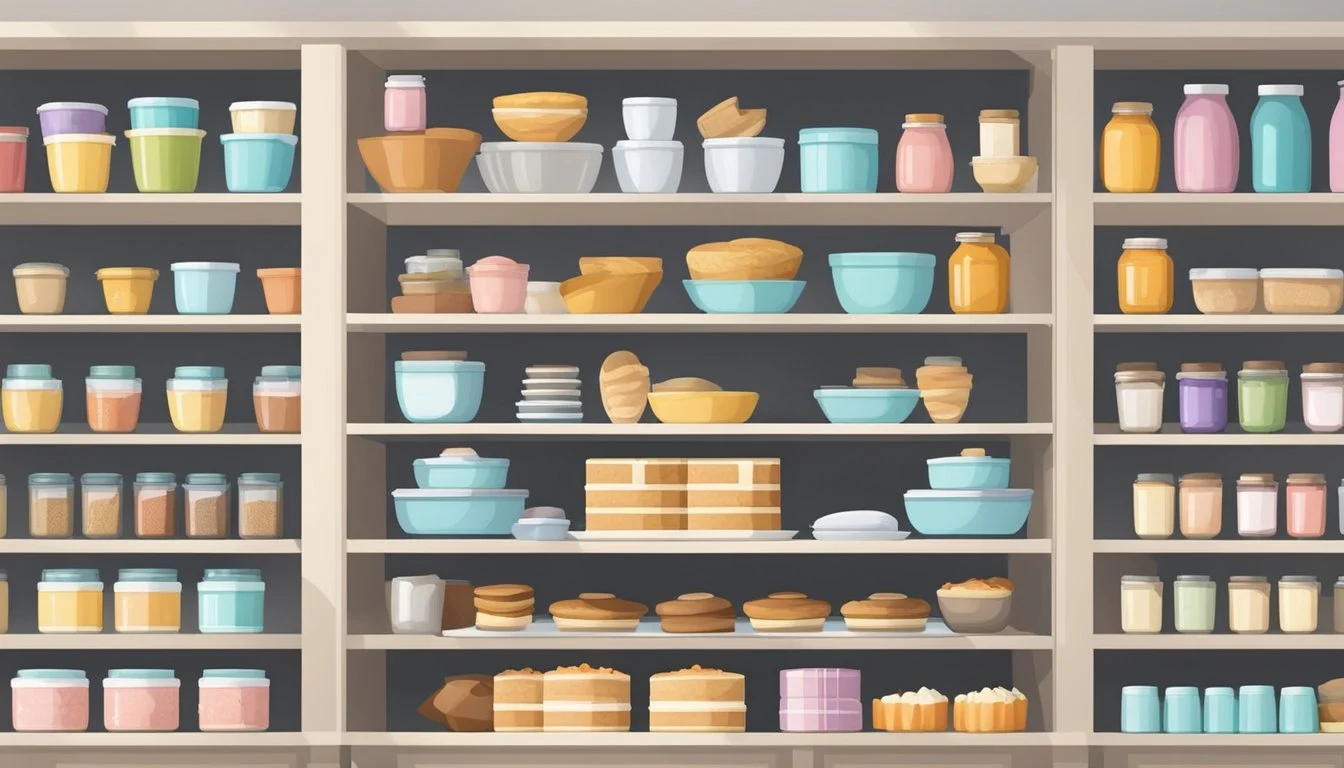How Long Does Cake Mix Last?
Unveiling Shelf Life Secrets
Cake mixes have become a staple in the modern kitchen, offering convenience and consistency to both novice and experienced bakers. They are meticulously crafted to bring together all the dry ingredients required for a delicious cake, ensuring that only a few additional components are needed to complete the recipe. The shelf life of these mixes is a subject of interest for many, as it dictates the longevity of the product and its viability for use beyond the printed date.
Typically, a store-bought cake mix comes with a "best by" date rather than a strict expiration date, which suggests the time frame in which the product is expected to perform at its peak. However, this does not mean that the mix becomes unsafe to consume immediately after this date. Preserved by the dry nature of its ingredients and often aided by added preservatives, an unopened cake mix can last several months beyond this date, if stored properly in a cool, dry place. Changes in appearance, smell, or taste, though, can be telltale signs that a mix is past its prime.
When evaluating whether a cake mix is still fit for baking, it is crucial to consider factors such as the storage environment and any signs of spoilage. While cake mixes do not spoil in the same manner as perishable goods, the leavening agents within them can lose their efficacy over time. This can lead to a finished product that may not rise as intended, impacting the texture and overall quality of the cake. With proper storage, cake mixes can last beyond the "best by" date, but baking success is ultimately best with a mix that is within its intended shelf life.
Understanding Cake Mix Shelf Life
The shelf life of cake mix depends on several factors including preservation methods and storage conditions. Knowing how to assess the actual usability of cake mix beyond the dates printed on the package can save consumers from unnecessary waste.
Determinants of Shelf Life
The shelf life of cake mix can vary based on ingredients and packaging. Preservatives commonly found in cake mixes tend to extend usability, allowing them to remain safe for consumption for a period beyond their printed dates as long as the package is unopened and properly stored.
Expiration Date vs. Best By Date
The expiration date indicates the estimated time up until the product should remain at peak quality, while "Best by" date suggests when the product may begin to decline in quality but is still usable. Most cake mixes feature a "best by" date rather than an explicit expiration date, indicating that they can generally be used after this date, but with potential slight declines in quality.
Recognizing Spoilage Signs
It is essential to recognize the signs of spoilage before using a cake mix that has surpassed its "best by" date. If a cake mix exhibits a noticeable change in color, discoloration, an abnormal odor, or any signs of mold, it should not be used as these are clear signs of spoiling. The texture should also remain consistent with the expected product; any notable deviations could indicate spoilage.
Effects of Storage Conditions
Storage conditions greatly affect the shelf life of cake mix. To maximize longevity, cake mix should be stored in a cool, dry place away from direct sunlight. Exposure to moisture or heat can compromise the integrity of the mix, potentially altering its appearance and texture. Proper storage conditions help maintain the product's quality and extend its usability period well beyond the "best by" date.
Proper Storage Solutions
The longevity and quality of cake mix are contingent upon proper storage methods. Storage conditions should prevent exposure to air, moisture, and extreme temperatures to maintain the mix's usability.
Storing in the Pantry
Cake mix should be stored in a cool and dry place, such as a pantry. It's critical to keep the storage area free from fluctuations in temperature and away from any humid environment which could compromise the mix's integrity.
Temperature: Keep at a consistent room temperature.
Humidity: Low humidity levels are preferable.
Refrigeration and Freezing Tips
Although not usually necessary, one can store cake mix in the fridge or freezer to extend its shelf life. When freezing, a resealable bag or airtight container is recommended to prevent freezer burn.
Fridge: Ensures a cooler temperature, possibly benefiting mixes in warmer climates.
Freezer:
Prevent freezer burn by using airtight packaging.
Thaw at room temperature before use.
Using Airtight Containers
Using airtight containers provides the best defense against the stale effects of air exposure. Containers with tight seals preserve the freshness and prevent the cake mix from absorbing any odors.
Resealable Bags: Another option, especially if the original packaging isn't resealable.
Containers: Should be opaque to protect from light exposure.
Impact of Environmental Factors
Environmental factors play a crucial role in the preservation of cake mix quality. Temperature and humidity are primary considerations that can affect shelf life.
Temperature and Humidity Effects
Exposure to high temperatures and high humidity levels accelerates the degradation of cake mix. They can compromise the integrity of the mix by promoting the growth of mold and causing rancidity in any fats present. To ensure longevity, it is imperative to store cake mix in a cool and dry place. This environment minimizes the risk of moisture buildup, which is detrimental to the shelf life of the product.
Protecting Cake Mix from Sunlight
The preservation of cake mix also entails safeguarding it from sunlight—specifically, direct sunlight. Sunlight can lead to changes in temperature within the storage area, and even cause chemical changes in the mix that impair quality. Cake mix should be stored in an opaque container or area where it is not subjected to direct beams of light to maintain its freshness for as long as possible.
Determining Freshness and Quality
Ensuring that cake mix is fresh and of good quality is vital for the success of any baking endeavor. Here are specific ways to assess its condition:
Analyzing Texture and Consistency
One should examine the cake mix for any unusual lumps or a texture that deviates from the fine, uniform powder it should be. Moisture exposure can cause clumping, which may indicate spoilage. Visible mold spots are a clear sign the mix has gone bad and should be discarded. The leavening agent in the mix, responsible for making the cake rise, can become ineffective over time. If the consistency of the powder has changed, it may be a sign that the leavening agent is no longer active, compromising the mix's ability to provide the desired texture in a baked cake.
Assessing Taste and Odor
Before using the mix, one should smell it to detect any off-putting or sour odors, which suggest that the product has spoiled or rancid ingredients. The taste of the raw mix, though not a comprehensive test, can sometimes indicate staleness or an imbalance in ingredients, provided it has been deemed safe to taste. If there's any doubt after these assessments, it's safer to dispose of the mix rather than risk an unpleasant outcome.
Using Expired Cake Mix
When considering using expired cake mix, one should be aware of the potential risks and the circumstances when it's still safe to use.
Potential Risks
Foodborne Illnesses: An expired cake mix could lead to food safety concerns. Over time, the quality of the mix can deteriorate, creating a risk for foodborne illnesses if any contaminants are present.
Flat Cake: The leavening agents in cake mixes lose their potency over time. This can result in a flat cake because the necessary chemical reaction does not occur properly.
When It's Okay to Use
Visual Inspection: If the cake mix is past the 'best by' date, it may still be safe to use as long as it does not show signs of spoilage, such as mold or an off-putting smell.
Storage Conditions: Proper storage is crucial for extending the shelf life of cake mix. A mix stored in a cool, dry place is less likely to spoil than one exposed to heat and moisture.
It's important to approach expired cake mixes with caution and prioritize safety to reduce the risk of consuming a potentially unsafe product.
Maximizing the Life of Cake Mix
When it comes to extending the shelf life of cake mix, proper storage is key. The preservatives, sugar, and flour within the mix remain stable longer when stored under ideal conditions.
Tips for Extending Freshness
Store Under Ideal Conditions:
One should store cake mix in a cool, dry place to prevent moisture from compromising the leavening agents. A pantry or cupboard away from heat sources is optimal.
Keep It Sealed:
Ensure the cake mix is in an airtight container or sealed tightly in its original packaging. This practice helps to maintain freshness and protects against pests.
Mind the Dates:
While the shelf life of cake mix can exceed the "best by" dates, it is wise to use the mix as close to these dates as possible for best quality.
Does Freezing Help?
The Verdict on Cold Storage:
Freezing can prolong the shelf life of cake mix. However, it is important to note that freezing should be done properly to prevent moisture build-up which could affect the quality of the mix.
How to Freeze Cake Mix:
To freeze cake mix, first, ensure it is sealed in an airtight container or heavy-duty freezer bag. Label the container with the current date before placing it in the freezer.
Table: Effectiveness of Freezing on Cake Mix Components
Component Effectiveness of Freezing Leavening Agents Potentially reduces effectiveness Preservatives Not affected by freezing Sugar Stable, risk of clumping Flour Stable, keep dry to prevent clumping
Remember, while a frozen cake mix can keep for additional months, one should always assess the mix for off-odors or discoloration before use, indicating that the quality may have been compromised despite the freezing.
Brand-Specific Considerations
When assessing the shelf life of cake mixes, one must consider the specifics outlined by individual brands as well as the differences between homemade and store-bought mixes. Each has distinct recommendations and best-by dates that influence their longevity.
Duncan Hines and Betty Crocker
Duncan Hines cake mixes come with a "best by" date, indicating when the mix is expected to perform at its peak. It's crucial for consumers to note that while a cake mix may be safe to consume after this date, the quality could decline.
Safety after Date: Typically remains safe for consumption beyond the "best by" date when stored properly.
Quality Consideration: Expect possible changes in taste and texture after the "best by" date.
In contrast, Betty Crocker cake mixes are stamped with a "best if used by" date. This label guides consumers towards the optimal usage timeframe for the best flavor and quality.
Shelf Life: May last beyond the labelled date, but users should check for signs of spoilage.
Storage: Keep in a cool, dry place away from sunlight.
Homemade vs. Store-Bought Mixes
Homemade cake mix freshness depends greatly on the ingredients used. Typically, they lack preservatives found in store-bought options, which can lead to a shorter shelf life.
Preservatives: Usually absent, affecting longevity.
Storage Tips: Cool and dry conditions are paramount for extending shelf life.
Store-bought cake mixes, such as those from Betty Crocker or Duncan Hines, benefit from a longer shelf life due to included preservatives.
Longevity: Preservatives help maintain quality for the duration of the listed "best by" dates and potentially beyond.
Storage: Properly sealed, away from moisture and heat, to preserve the mix's integrity.
Cooking with Cake Mix
When utilizing cake mix, home bakers can expect a versatile ingredient suitable for a variety of desserts, not just typical cakes (how long do cakes last?). Cake mixes can serve as a base for numerous baked goods, streamlining the baking process while offering room for creativity through the addition of mix-ins and modifications.
Baking Cakes and More
Baking Cakes: The traditional use of cake mix is, unsurprisingly, for baking cakes. It offers convenience and consistency, streamlining the process of measuring dry ingredients. Users simply follow the directions on the box, typically requiring the addition of water, oil, and eggs. They then bake the mixture in an appropriate pan until a toothpick inserted into the cake comes out clean.
Expanding Beyond Cakes: Cake mix is not limited to just cakes. Home bakers can easily adapt it to create a plethora of desserts such as cookies, brownies, and even pancakes or waffles. By adjusting the added liquids and cooking method, a simple cake mix can transform into:
Cookies: Add less liquid and more fat to the mix to create a denser, cookie-like texture.
Brownies: Modify with additional eggs and oil for a rich, chewy texture akin to traditional brownies.
Pancakes and Waffles: Reduce the fat and incorporate more milk or water to thin the batter suitable for a griddle or waffle iron.
Using Mix-ins and Modifications
Enhancing Flavors and Textures: Cake mixes can be customized with a variety of mix-ins to enhance flavors and textures. Consider adding:
Chocolate chips, nuts, or fruit to diversify the taste and give an extra bite.
Spices to complement the season or occasion, such as cinnamon in an autumn-inspired dessert.
Extracts and citrus zest to create a more complex flavor profile.
Creating Unique Desserts: By integrating modifications, cake mixes serve as a foundational canvas for unique desserts. A baker could:
Swirl in caramel or fruit preserves before baking for a decadent flavor.
Layer the batter with cheesecake filling to produce a hybrid dessert.
Use the mix as a crumble topping for fruit cobblers for a quicker alternative to traditional toppings.
In short, cake mixes offer endless possibilities that go beyond basic cakes, appealing to bakers of all skill levels who seek efficiency as well as the opportunity to experiment with different desserts and flavors.
Frequently Asked Questions
This section addresses the primary concerns and corrects common misunderstandings regarding the shelf life and safety of using cake mix past its expiration date.
Common Queries
Q: How long does cake mix last after the expiration date?
A: Cake mix is typically safe for consumption several months past the best before date if it has been stored correctly. It remains shelf-stable under optimal conditions.
Q: How should one store cake mix to extend its shelf life?
A: To maintain the quality of cake mix, store it in a cool, dry place away from direct sunlight. Airtight containers can help prevent deterioration and clumping.
Q: Can you freeze a cake made from old cake mix?
A: Yes, cakes made from cake mix, even after the best before date, can be frozen. The freezing process doesn't differentiate between freshly made or older mix origin.
Q: Are there specific signs to identify if cake mix has gone bad?
A: Expiration can be noticed through signs such as an off smell, visible mold, clumping, or any discoloration.
Myths and Misunderstandings
Q: Will using expired cake mix result in food poisoning or illness?
A: While using an expired cake mix rarely leads to food poisoning, one should always inspect for spoilage indicators before use to ensure safety.
Q: Do storage conditions drastically affect the shelf life of cake mix?
A: Storage conditions indeed play a crucial role. The cake mix remains stable longer when kept in cool, dry places and away from contaminants.
Conclusion
The longevity of cake mix is influenced by its storage conditions. Unopened cake mix typically stays viable for 12-18 months past its 'best by' date when stored in a cool, dry place. Once the package is opened, however, its shelf life is reduced to roughly 6-8 months given proper storage away from moisture and heat.
The consumer should note that a 'best by' date does not necessarily indicate an expiration date, but rather the point up to which the product is expected to retain optimal quality. It is essential to inspect the mix for signs of spoilage, such as an off odor or presence of mold, before use.
As a precaution, individuals should follow food safety guidelines and remain attentive to any changes in the appearance or smell of the mix. For best results, one should adhere to the 'best by' dates provided by manufacturers like Duncan Hines, Pillsbury, and Betty Crocker. The quality of the cakes produced with mixes used beyond these dates may not meet the consumers' expectations of taste and texture.
Cake mixes are a convenient and reliable baking option as long as they are used within a reasonable time frame and stored properly. Bakers can confidently use their cake mixes past the marked date, provided they employ good judgment and proper storage techniques.






